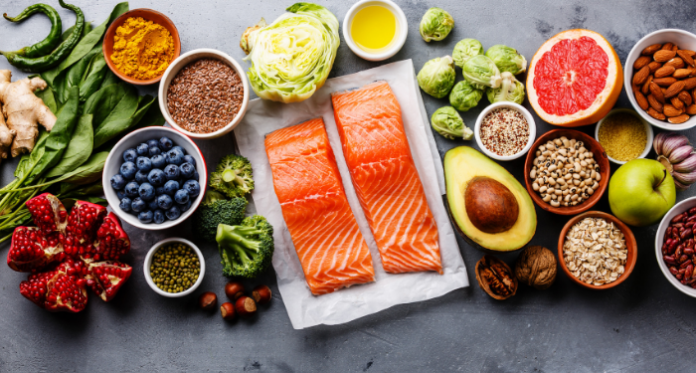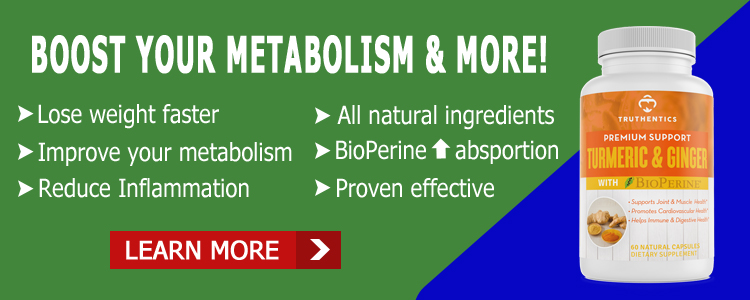Today, 88 million Americans are living with blood sugar levels higher than normal. If left untreated, this can lead to insulin resistance and a higher risk of developing type 2 diabetes.
However, changes in your lifestyle can help you control your sugar levels and prevent insulin resistance from occurring. It involves doing physical activity, following a lower carb diet and adopting healthy habits.
While genetics and aging can influence the development of insulin sensitivity, insulin resistance is the result of excess body weight, too much belly fat, lack of exercise, and other factors.
One of the most evident among them is inflammation – the body’s natural defense against invaders – which can lead to a prolonged inflammatory response called chronic inflammation that can be lethal to your body.
The good news is it is possible to curb inflammation by following an anti-inflammatory diet.
What Is An Anti-Inflammatory Diet?
An anti-inflammatory diet focuses on foods rich in anti-inflammatory agents. Anti-inflammatory agents are the group of chemicals that block prolonged inflammation. An example of an anti-inflammatory agent can be an anti-oxidant.
One crucial component that triggers inflammation is free radicals, coming from refined sugar. Free radicals lead to cell damage that causes inflammation. However, an antioxidant acts as a free radical scavenger. They eliminate free radicals to prevent cell damage and inflammation. A reduction in inflammation means no spikes in your blood sugar levels. Hurray!
Let’s now take a look at foods rich in anti-inflammatory agents and antioxidants.
5 Foods to Help Keep Blood Sugar in Check
Turmeric – Turmeric is a staple spice in Asia but an anti-inflammatory food as well. It heals wounds and swelling (two signs of inflammation) because of curcumin – a chemical that blocks the inflammatory processes and improves insulin resistance.
Fruits & Green Leafy Vegetables – Most of the fruits and green leafy vegetables are rich in fiber, which also act as antioxidant and eliminates free radicals. Therefore, fiber can play an essential role in managing blood sugar levels.
However, you should also be conscious of the sugar content of the fruits. In this regard, mangoes and pineapples are high in sugar, but strawberries and cherries are less in sugar and rich in fiber.
Olive Oil – Do you know why olive oil is used in cosmetics? It reduces inflammation. Hence, making it an essential part of your diet can help you lower the high sugar levels. Olive oil contains oleocanthal that inhibits the two important enzymes of the inflammatory pathway, cyclooxygenase1 and cyclooxygenase2. Thus, it can help you keep control over your sugar levels.
Oily Fish – Oily fish (tuna and salmon) consists of an anti-inflammatory component, Omega-3 fatty acids. It reduces the inflammatory chemicals like cytokines and eicosanoids, thus protecting you from chronic inflammation and helping to control blood sugar levels.
Nuts – Nuts are rich in vitamin E, which is an antioxidant. As an antioxidant, Vitamin E limits the production of free radicals, therefore delaying the chronic inflammation. Hazelnuts, almonds, and peanuts are a good source of vitamin E and can help blood sugars.
It’s time to stop taking our health for granted. Follow a healthy diet and enjoy a better quality of life.
References
U.S National Library of Medicine. 2020. Prediabetes
https://medlineplus.gov/prediabetes.html
Association for the Advancement of Restorative Medicine. 2019. Effect of the Anti-Inflammatory Diet in People with Diabetes and Pre-Diabetes: A Randomized Controlled Feeding Study
https://restorativemedicine.org/journal/effect-anti-inflammatory-diet-people-diabetes/
NCBI. 2011. Molecular mechanisms of inflammation. Anti-inflammatory benefits of virgin olive oil and the phenolic compound oleocanthal.
https://www.ncbi.nlm.nih.gov/pubmed/21443487
Rich Farina, M.S. is a Metabolic Health and Conditioning Specialist with over 30 years of experience helping thousands of individuals lose weight, rebuild their metabolisms, and improve their health in his Metabolic Testing & Weight Loss Centers.
He holds both Bachelor of Science and Master of Science degrees in Exercise Physiology and Public Health respectively and is a passionate advocate of using proven, scientific principles in his approach to exercise and nutrition.
He is a contributing author, professional speaker, and advisor on topics that include weight loss, human performance, and medical fitness.
He continues his deep-seated passion to help people improve their health and longevity through his own line of premium, all-natural nutritional supplements called Truthentics™. The Truthentics™ brand of nutritional supplements is specifically designed to help people compensate for nutritional deficiencies and bring their bodies back into balance.










